Threat Insights
LockBit Analysis
In a recent ransomware incident, the threat actor appeared to be a LockBit affiliate. When the ransomware execusted it changed the wallpaper on the client showcasing the message “LockBit Black. All your important files are stolen and encrypted!” as usual, but the ransom note was not the standard LockBit note stating “LockBit 3.0 the world’s fastest and most stable ransomware” and having references to the LockBit portal. Instead, it was a non-descript note just stating the files are encrypted and stolen with a reference to a QTox ID and an unidentifiable onion-mail.
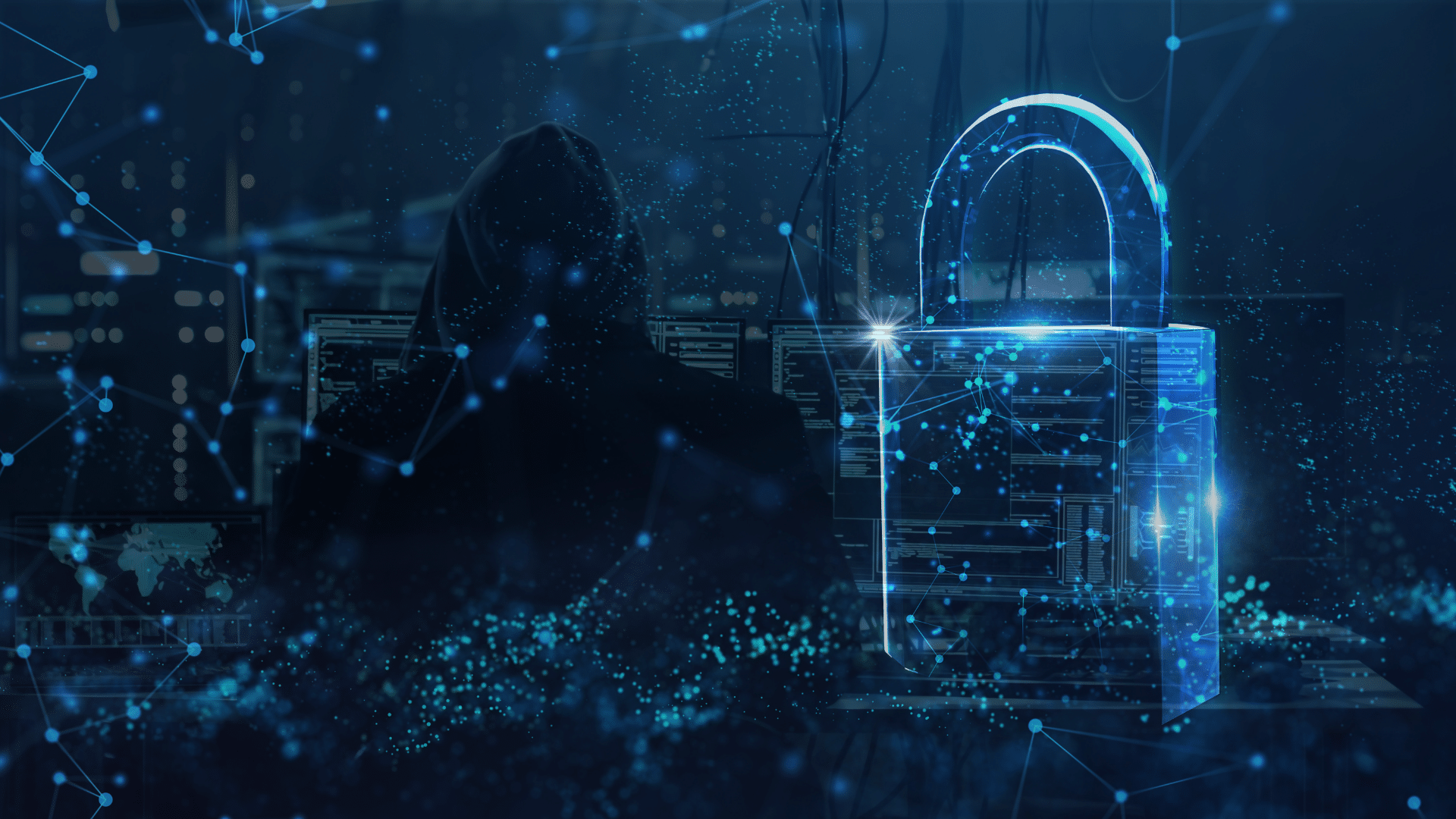
To decipher what this change in modus meant, we first decided to see if this was indeed the actual LockBit ransomware or someone using a modified version of LockBit. The builder for this particular ransomware, LockBit Black, has been leaked after an internal squabble in the group in 2022. So we decided to compare the ransomware used in this incident with one we generated ourselves with the leaked LockBit Black builder.
To start with, the builder has a number of different functions it utilizes when a encryption and decryption binary is created. This is all bundled into a single .bat file called build.bat. There are two main binaries, keygen.exe that generates the encryption key and the “Decryption ID”. The binary builder.exe takes a .json file with the different parameters that the ransomware binary can utilize, such as whitelisting of file types, hosts, folders and extensions but also if it should set the wallpaper among several other settings.

One question upon generating a binary with the build.exe binary was how the “Decryption ID” is determined, if that is something that needs to be given or can be set with the builder.
Looking at the sample it was found during the building of the ransomware binary, the keygen file generates the public and private RSA that is then used to encrypt the symmetric key that encrypts the files. The “Decryption ID” is eight hex bytes from the public RSA key after it has been base64 decoded.
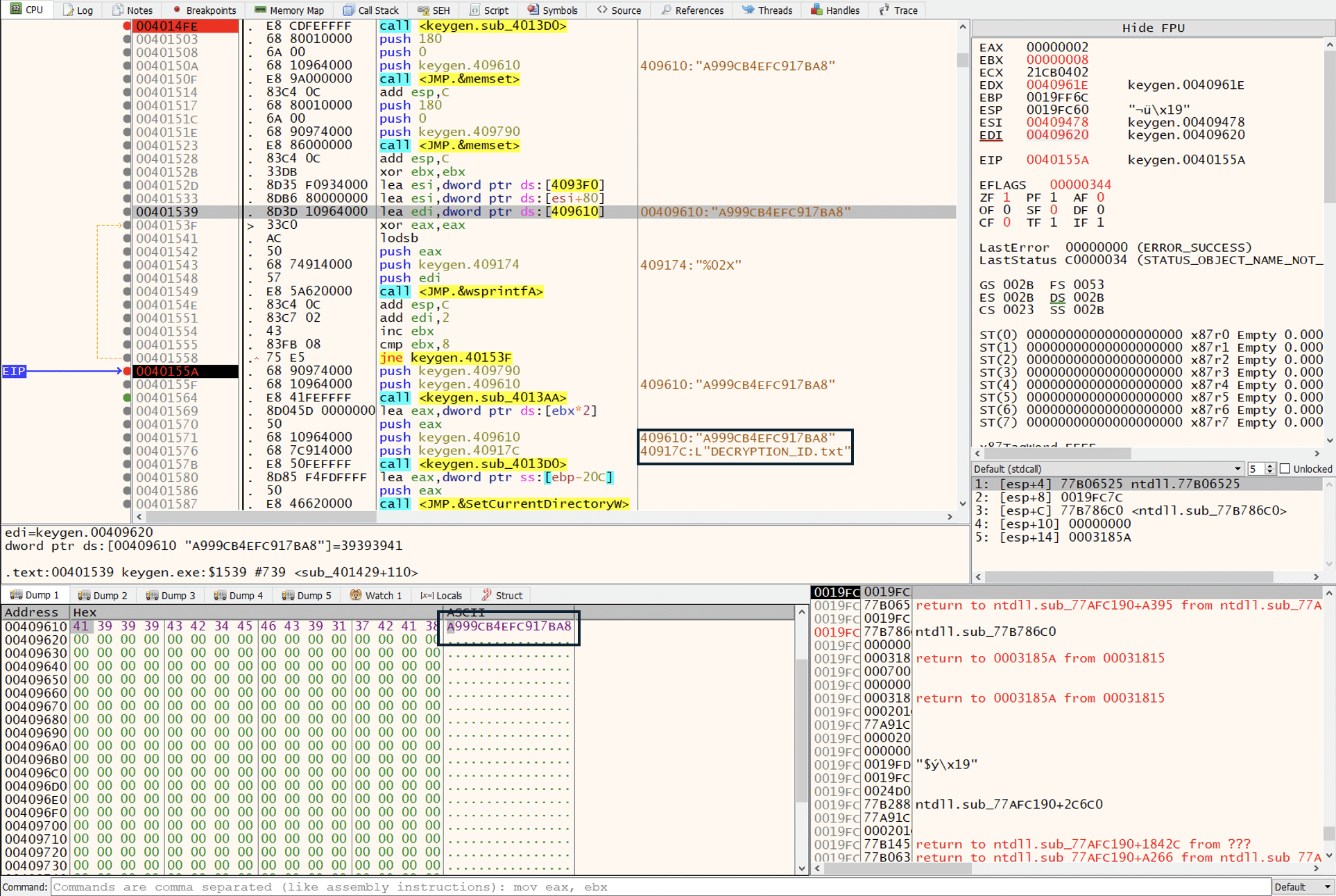
Since the ransomware binary can completely be generated from the builder, then how different was the sample found in the recent incident compared to one that is generated with the builder.
The samples were compared, using BinDiff, and showcasing that the binaries are identical. The binary generated by the builder is named LB3 as the one found in the incident. To make it clearer the ransomware binary generated with the builder is called LB3-built in the pictures.
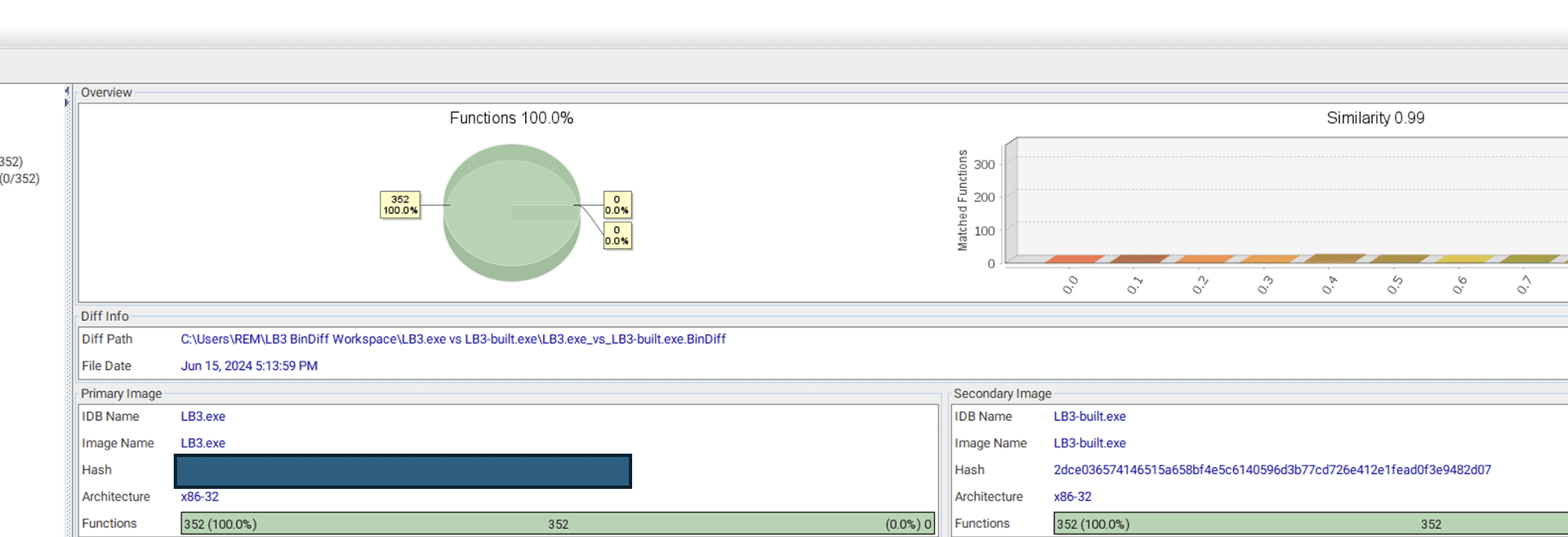
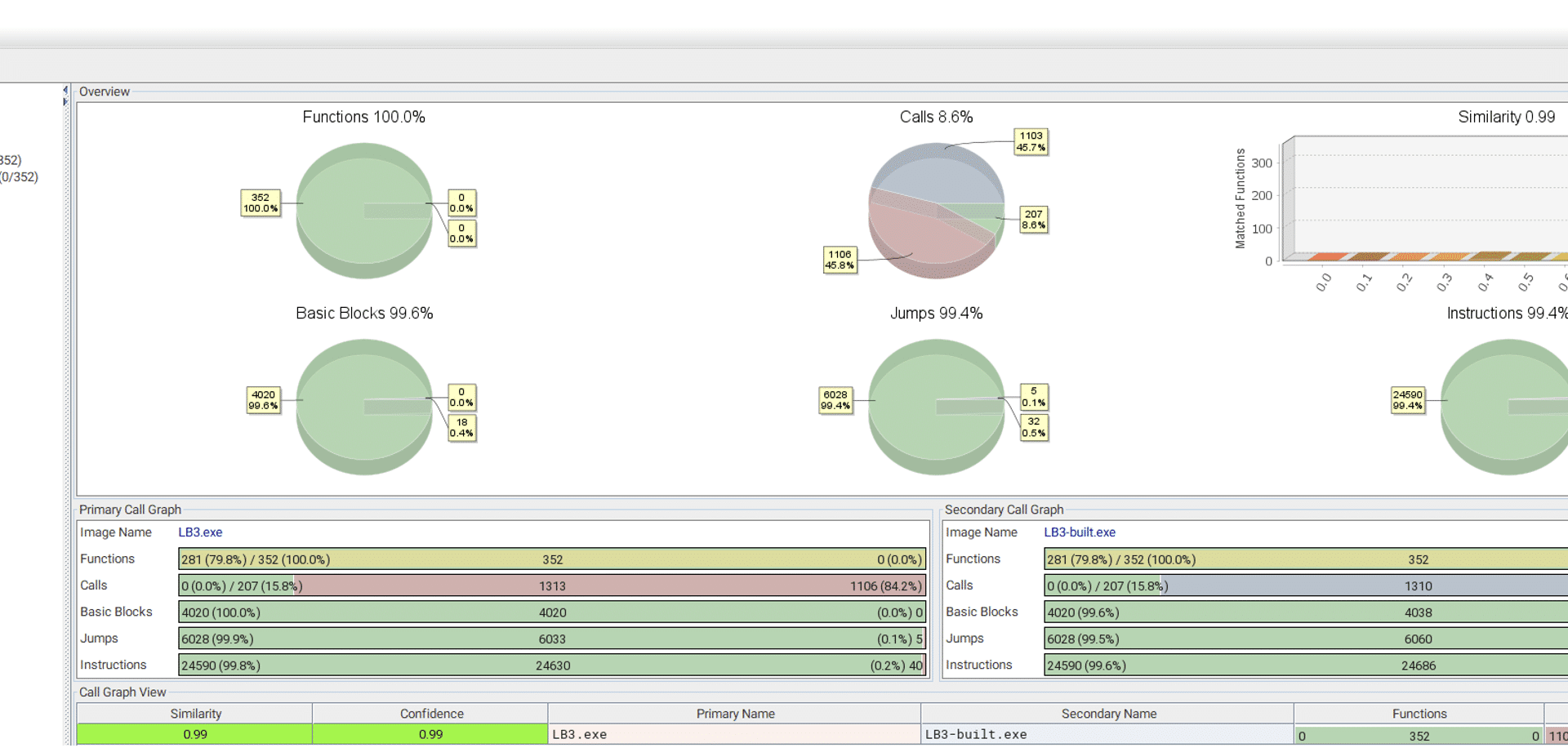
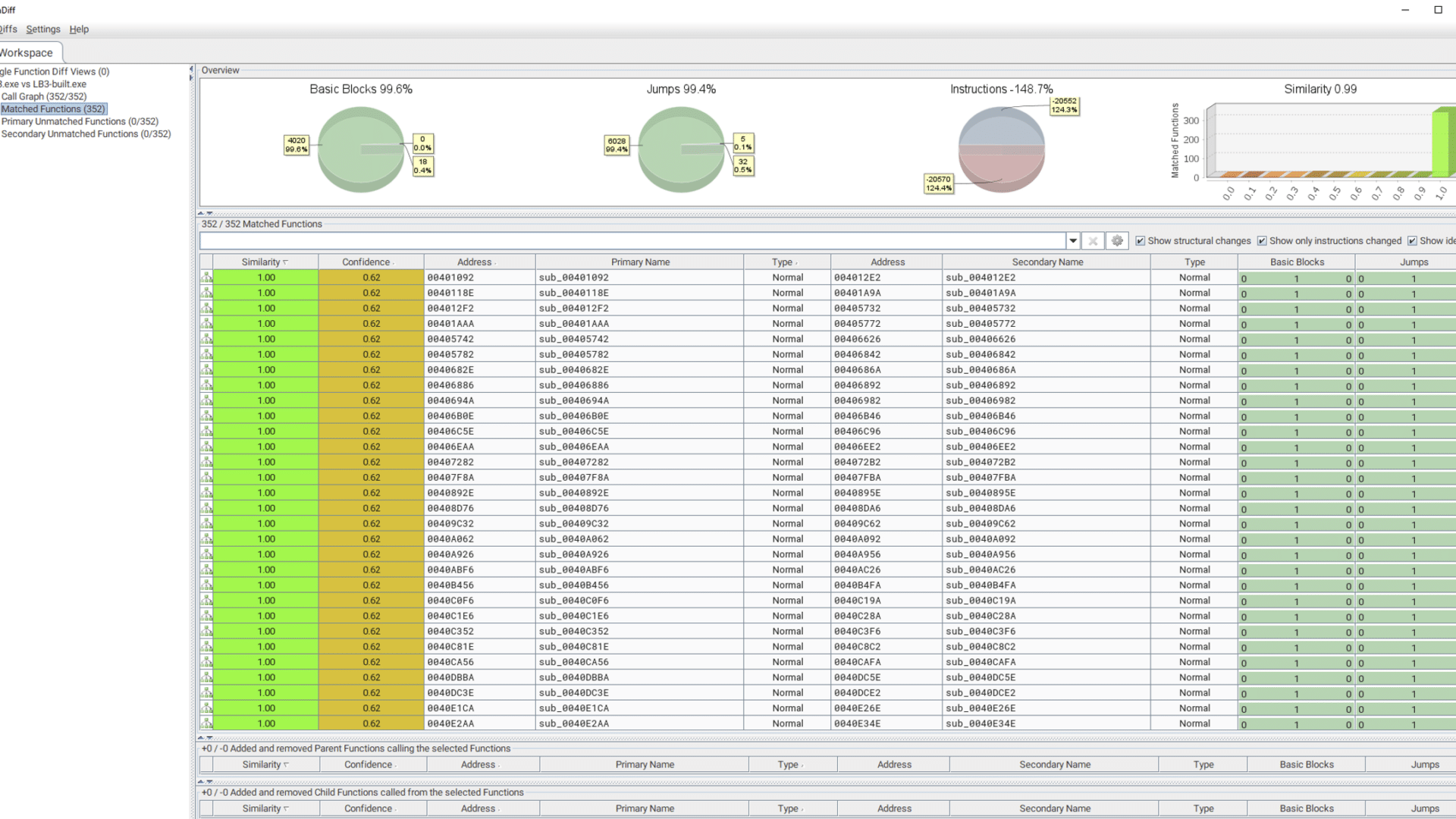
It’s obvious from this comparison that the ransomware used in this incident came from the official LockBit builder. This means that the threat actor was using the LockBit ransomware, without using the LockBit portal. To unpack what this means, we need to explain a bit about the criminal ransomware-as-a-service ecosystem.
The LockBit syndicate are not themselves hacking any victims. They operate a ransomware-as-a-service (RaaS) platform for other cybercriminals. One main service they offer is access to their own ransomware, but this is clearly only part of their service, as criminals could easily avoid paying them anything by using the leaked builder. The LockBit platform also includes access to other tools, like a negotiation platform and a data leak site to publish stolen data if the victims refuse to pay.
Their perhaps most important asset is also their brand. A very valid question for any ransomware victim is how they can be sure they will actually get their data back, if they pay the ransom to criminals. LockBit is a well-known brand, and they know that their profits will suffer if their name is associated with scams, so they ensure all “clients” get the decryption keys they pay for. They even claim they offer around-the-clock support service for victims that have trouble getting back their data after receiving the decryption keys.
There are other ransomware groups that use leaked builders to create their own ransomware. DragonForce is a relatively new ransomware group that use the leaked LockBit Black ransomware as base for their own ransomware. They have modified the ransomware, however, so it displays their own brand logo instead of the LockBit logo. Again, ransomware criminals rely on their brand to convince victims they won’t be scammed if they do pay the ransom. [1]
While it is possible that the threat actor may just be an inexperienced cybercriminal deciding to forego the advantages of using the LockBit portal to avoid paying the fees to LockBit, there are other potential reasons this particular cybercriminal decided to not use LockBit services.
LockBit had their infrastructure compromised by law enforcement in February 2024. Later in May 2024, the FBI outed the identity of the leader of LockBit, as the Russian national Dmitry Khorosev, when he was indicted. [2] This also meant that Khorosev became the subject to US sanctions under OFAC. Sanctions make it illegal for victims to pay ransom sums that may benefit sanctioned individuals. Such sanctions have in the past made victims less inclined to pay ransom sums, which in turn forced the affected ransom groups to “rebrand” to avoid it.
It’s possible a LockBit affiliate may attempt to create distance to Khorosev by not using the LockBit portal. The ransomware still displays the LockBit Black logo, but that is hard coded into the builder and requires a lot more time and technical skills to change. We have confirmed that changing the ransom note just requires changing a simple config file in the builder. It is also possible the affiliate no longer trusts LockBit after their infrastructure got compromised by law enforcement.
In fact, LockBit appears to struggle to stay relevant. After going silent for a long time after his identity was outed, the leader of LockBit have begun posting things that appear to be nothing more attention-grabbing publicity stunts, such as claiming LockBit had stolen data from the US Federal Reserve, a claim that was quickly debunked. [3]
It is far too early to draw any long-term conclusions from this one case, but it appears that international law enforcement has singled out these RaaS platforms, such as LockBit and AlphV [4], as key elements in the ransomware ecosystem, and try to take them down. This means that ransomware criminals will probably now have to adapt to this.
[1] https://cyble.com/blog/lockbit-blacks-legacy-unraveling-the-dragonforce-ransomware-connection/
[3] https://x.com/vxunderground/status/1805734538355581055
[4] https://www.justice.gov/opa/pr/justice-department-disrupts-prolific-alphvblackcat-ransomware-variant

